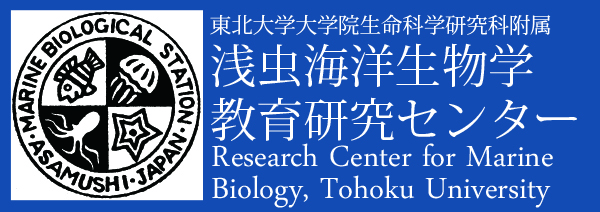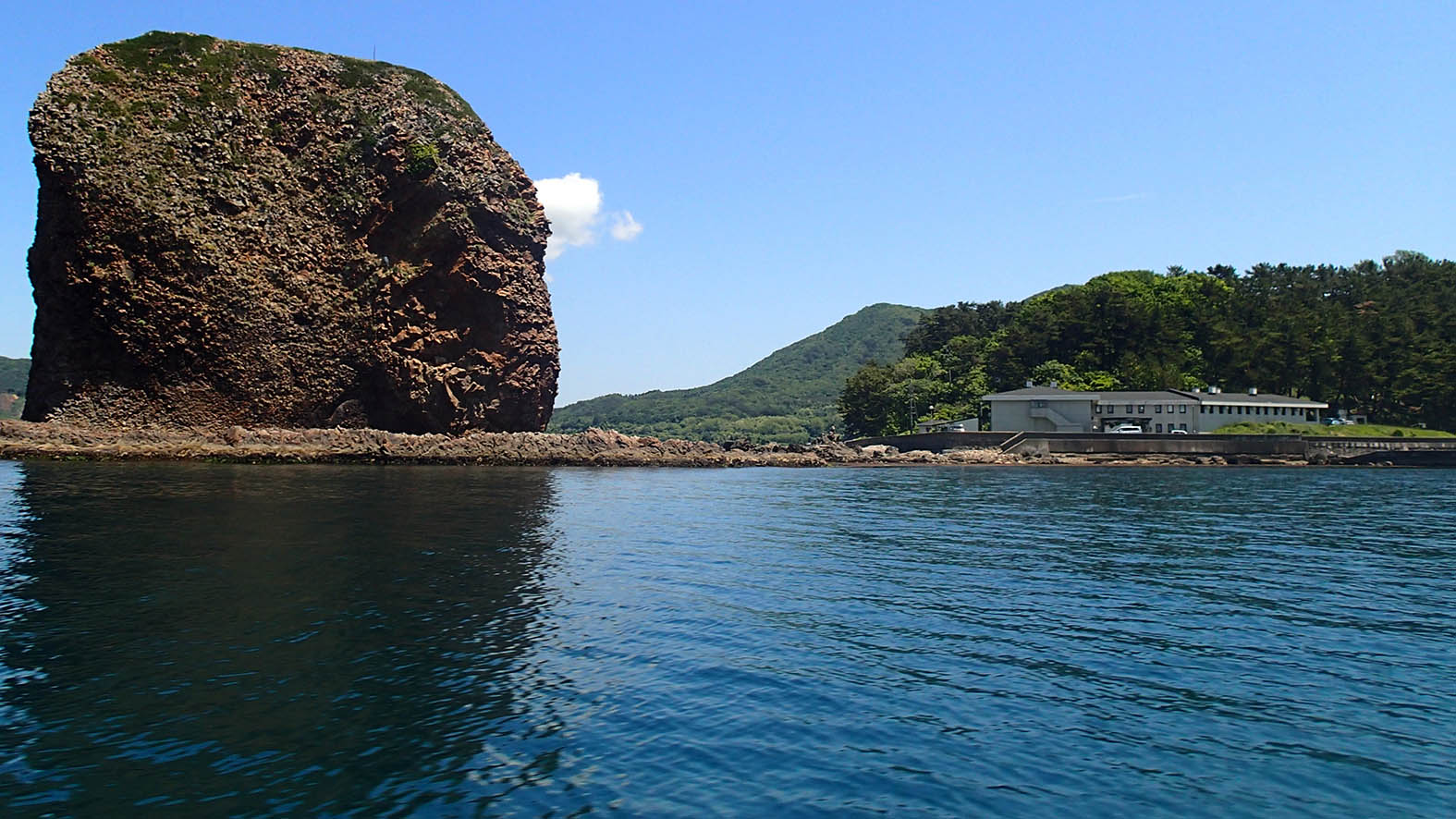The Research Center for Marine Biology, Graduate School of Life Sciences,
Tohoku University, was founded in July 1924 as the Asamushi Marine Biological
Station, Faculty of Science, Tohoku Imperial University. Since its establishment,
it has been dedicated to education and research in the field of marine
biology. Starting with a marine biology course held in the dormitory’s
cafeteria preceding the completion of the main building in March 1924,
it has provided various education programs. This includes summer courses
with distinguished international marine biologists as lecturers that were
offered between 1930 and 1933. These courses were crowded with university
students from across Japan. In addition to education programs for students,
the center’s aquarium (founded together with the station and closed in
April 1981, and succeeded by an aquarium run by Aomori Prefecture) contributed
disseminating information on marine biology. For more than 90 years, the
station has run marine biology courses for undergraduate and graduate students
from universities in the Tohoku district, including Tohoku University,
and has also cooperated with other universities that offer their own courses.
The center also has a long history in basic biological research focusing
on marine organisms. In Japan, Paracaudina chilensis, a sea cucumber, is
well known as “Hatai’s Shiro-namako,” a name honoring Shinkishi Hatai’s
contributions to the knowledge of the physiology and ecology of this organism.
The development of the spawning induction method for breeding Japanese
scallops (Gotaro Yamamoto) paved the way for its aquaculture. Research
on the life cycle of the moon jellyfish (Etsuro Hirai and Yoshiko Kakinuma)
enabled the rearing of the jellyfish in artificial environments such as
laboratories and aquariums. The study of planktonic diatoms (Seiji Kokubo)
has established the basis for marine plankton research in Japan. There
are also many other studies that have contributed to marine invertebrate
research, such as the discovery of Janus green granules (later reported
as cortical granules) in the fertilized eggs of sea urchins (Isao Motomura)
and the study of the spawning mechanism of tunicates (Takaharu Numakunai).
To this day, the center has made many scientific contributions to ecology,
developmental biology, and evolutionary biology based on the investigation
of various marine organisms.
During 1986–1987, the station renovated the main building, the dormitory,
and the boathouse. In 2004, eighty years after its founding, the station
changed its name to the Research Center for Marine Biology. In 2005, the
center was reassigned to the Graduate School of Life Sciences. In 2011,
the Ministry of Education, Culture, Sports, Science and Technology (MEXT)
certified the center as a Joint Usage/Education Center for Marine Biology,
called the Center for Promoting Marine Biology Education in Tohoku. In
2015, the dormitory was renovated to make it more accommodating for educational
instruction and collaboration. Starting in April 2016, the center committed
to promoting the field of marine biology as the Joint Usage Center for
Promoting Multidimensional Global Education Using Marine Organisms.
Various sea urchins (Hemicentrotus pulcherrimus, Strongylocentrotus intermedius,
S. nudus, Glyptocydaris crenularis and Temnopleurus hardwicki) are available
for embryological experiment almost throughout the year. Various ascidans
(Halocynthia roretzi, Ciona savignyi, Chelyosoma siboja and Ascidia sydneiensis
samea) are also available inbreeding condition. The scallop (Patinopecten
yessoensis) and the ascidian (Halocynthia roretzi) are cultivated in the
Bay.


